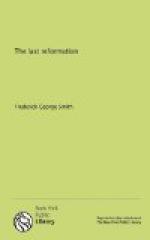The apostle John was banished to the Isle of Patmos in 95. Regarding that date as the close of the pure apostolic era, and 445, when the pope received from the emperor of the West official recognition of his claims to universal supremacy in the church, as representing one other extreme, we have but to calculate the time half way between these extremes to find the consistent starting-stake for the beginning of that time prophecy which is to measure both lines of prophetic truth. From 95 to 445 is a period of 350 years. Half of this period is 175 years. Therefore 175 years after 95, or 270, is the correct starting-point.
Protestant church historians recognize the decline that came in the early church. Many of them, as D’Aubigne, Marsh, Rutter, Waddington, and others, point to the third century, or the latter half of the third century, as marking an unusual epoch in this declension. Others, however, who view things almost wholly from the external point of view, regard the accession of Constantine in the early part of the following century as marking the important epoch. With reference to this subject, I quote Joseph Milner, the English ecclesiastical historian: “I know it is common for authors to represent the declension of Christianity to have taken place only after its external establishment under Constantine. But the events of history have compelled me to dissent from this view of things.”—Ch. Hist., Cent. IV, Chap. I.
It is also evident from the facts of history that, in addition to the corruption of evangelical faith, that other phase of the apostasy—human ecclesiasticism—was also highly developed before the end of the third century. George P. Fisher says, “The accession of Constantine [A.D. 312] found the church so firmly organized under the hierarchy that it could not lose its identity by being absolutely merged in the state.”—History of the Christian Church, p. 99.
In the year A.D. 270 Anthony, an Egyptian, the father of monasticism, fixed his abode in the deserts of Egypt and formed monks into organized bodies. Dowling, describing the extravagance of monkery and the false standard of piety and holiness it created, declares that monkery “actually affected the church universal.” See History of Romanism, pp. 88, 89. Very few marks of genuine piety remained. With the decline of evangelical knowledge came a reign of superstition and ignorance. Milner, adverting to the institution of monkery in the third century, expresses his “regret that the faith and love of the gospel received toward the close of it a dreadful blow from the encouragement of this unchristian practise.”—Century III, Chap. XX.




